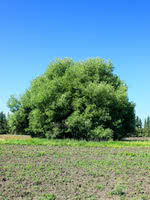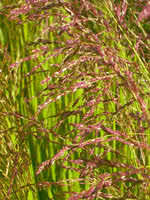Mon-Fri 9am - 5pm Mountain time
Acute Willow vs Tall Manna Grass
Salix acutifolia
Glyceria grandis
ONLY AVAILABLE BY CONTRACT GROW
Acute Willow is a very fast growing small tree that can reach growth rates of up to 6 feet per year. It's a great choice for developing a quick, hardy shelterbelt, windbreak, or privacy screen.
Acute Willow will grow multi-stemmed but can be pruned to a single stem for a smaller footprint. It prefers moist areas and requires almost no maintenance.
Willows are important to native pollinators each spring as they have higher amounts of pollen and nectar early each growing season when other food sources are scarce.
Manna Grass and other waterside plants are an excellent way to prevent erosion and provide habitat and forage for animals. The difference is that Manna Grass looks better doing it! With distinctive purple grains at the top of its stalks, Manna Grass adds a splash of color to the waterside that most other aquatics can't offer.
Manna Grass is good for returning disturbed sites to nature and provides nourishment to many animals, except for cattle who find it toxic.
Acute Willow Quick Facts
Tall Manna Grass Quick Facts
In row spacing: 2.4 m (8 ft)
Toxicity: toxic to cattle

